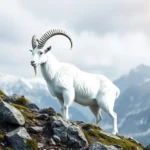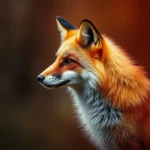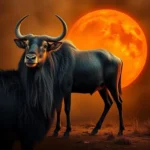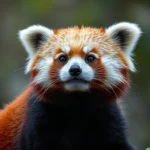The Symbolism of Fleckvieh Cattle: A Deep Dive into Their Meaning and Significance

Disclaimer: Some images on this website are AI-generated artworks and may not accurately represent real animals.
Fleckvieh cattle are not just remarkable animals in the agricultural landscape; they also carry profound symbolism and meaning that has evolved over centuries. This post will explore the rich history, physical characteristics, and spiritual significance of Fleckvieh cattle, shedding light on their role in agriculture and culture.
Understanding Fleckvieh Cattle
Origins and Breeding History
The Fleckvieh breed is known for its unique blend of dairy and beef qualities, originating from the Alpine regions of Europe, particularly in Switzerland and parts of Germany. The breed was developed through selective breeding, combining local cattle with other breeds to enhance desirable traits.
Historically, Fleckvieh cattle have played a crucial role in the agricultural practices of these regions. They were bred primarily for their versatility, contributing significantly to both milk and meat production. This dual-purpose trait has made them indispensable to farmers, ensuring sustenance and economic stability in rural communities.
Physical Characteristics
Fleckvieh cattle are easily recognizable due to their distinctive appearance. Below is a table summarizing their key physical characteristics:
| Characteristic | Description |
|---|---|
| Coloration | Predominantly white with red or brown patches |
| Size | Medium to large, typically weighing between 1,500 to 2,000 lbs |
| Strength | Muscular build, known for strength and endurance |
| Adaptability | Thrives in various climates, from alpine to temperate regions |
These physical traits not only make Fleckvieh cattle suitable for diverse environments but also symbolize resilience and adaptability—qualities essential for survival in the agricultural industry.
Role in Agriculture
Fleckvieh cattle are a vital asset to the dairy and beef industries. As a dual-purpose breed, they provide high-quality milk and meat, contributing to food security and economic viability in farming communities. Their milk is rich in protein and fat, making it ideal for cheese production, while their meat is sought after for its flavor and tenderness.
Moreover, Fleckvieh cattle play a significant role in sustainable farming practices. They are often raised on pasture, which supports the health of the soil and local ecosystems. This grazing behavior not only benefits the cattle but also promotes biodiversity and reduces the need for synthetic fertilizers.

Symbolism and Spiritual Meaning
Hard Work and Perseverance
Cattle, in general, symbolize hard work and perseverance, and Fleckvieh cattle epitomize this association. These animals are known for their strong work ethic, reflecting the dedication of farmers who rely on them for their livelihoods. The labor they perform is not just physical; it embodies the spirit of commitment and resilience in the face of challenges.
In many cultures, the image of a hardworking cow is synonymous with diligence and determination. Fleckvieh cattle, with their robust nature and ability to thrive in various conditions, serve as a reminder of the values of hard work and perseverance in agricultural life.
Fertility and Abundance
Fleckvieh cattle also symbolize fertility and abundance. In agricultural contexts, they represent prosperity and the fruits of labor. The successful breeding and raising of Fleckvieh cattle often lead to increased yields in both milk and meat, which in turn supports local economies.
Furthermore, in various cultures, cattle are integral to fertility rituals and agricultural celebrations. Their association with fertility extends beyond mere reproduction; it encompasses the broader concept of abundance in life, including food, family, and community.
Community and Family Ties
Cattle have historically been symbols of community and family ties. In traditional farming communities, Fleckvieh cattle are often seen as more than just livestock; they represent unity and cooperation within herds and families. The relationships between farmers and their cattle foster a sense of responsibility and connection to the land.
In many cultures, cattle are central to communal activities, from harvest festivals to family gatherings. The shared experience of raising and caring for these animals strengthens bonds among community members, reinforcing the significance of collaboration and support in rural life.
Fleckvieh Cattle in Dreams
Interpretations of Fleckvieh Dreams
Dreaming of Fleckvieh cattle can carry various interpretations, often linked to themes of prosperity and stability. Such dreams may reflect a desire for abundance in one’s life or a recognition of the hard work required to achieve it.
The presence of Fleckvieh cattle in dreams can also symbolize nurturing and care, both for oneself and for others. They may serve as a reminder to appreciate the resources available and to cultivate a sense of gratitude for the abundance already present.
Common Themes in Cattle Dreams
The following table outlines common themes associated with cattle dreams:
| Theme | Interpretation |
|---|---|
| Abundance | A sign of financial prosperity or successful ventures |
| Security | Feeling safe and grounded in one’s personal life |
| Hard Work | A reflection of the effort and dedication required to achieve goals |
| Community | Emphasizing the importance of relationships and support in life |
These themes highlight the multifaceted nature of dreams involving Fleckvieh cattle, suggesting that they may carry messages about personal growth, stability, and the importance of community.
Modern Interpretations
Cultural Significance Today
In contemporary society, Fleckvieh cattle continue to hold cultural significance. They are celebrated not only for their agricultural contributions but also for their role in promoting ethical and sustainable farming practices. As consumers become more conscious of the food they eat, the demand for humanely raised and environmentally friendly products has increased.
Fleckvieh cattle are frequently featured in literature, art, and media, symbolizing agricultural heritage and the enduring connection between humans and nature. Their depiction often evokes nostalgia for simpler times while also promoting a message of sustainability and respect for the land.
Environmental and Ethical Symbolism
In the context of environmentalism, Fleckvieh cattle represent sustainability and humane farming practices. Their ability to graze on pasturelands and contribute to soil health underscores the importance of ecological balance. As society grapples with issues of climate change and environmental degradation, the symbolism of Fleckvieh cattle as stewards of the land becomes increasingly relevant.
Fleckvieh cattle exemplify the principles of agroecology, where farming methods are designed to work in harmony with nature. Their presence in modern farming serves as a reminder of the need for sustainable practices that respect animal welfare and promote ecological health.
Spiritual Practices and Rituals
In spiritual contexts, Fleckvieh cattle may be incorporated into modern interpretations of rituals and practices. They symbolize grounding and stability, often serving as focal points in meditation and mindfulness exercises. The act of connecting with nature through the presence of these animals can foster a sense of peace and tranquility.
Additionally, in holistic practices, the symbolism of cattle extends to themes of nourishment and care. Practitioners may draw on the qualities of Fleckvieh cattle to inspire self-care and community support, emphasizing the importance of nurturing relationships and fostering abundance in one’s life.
Key Takeaways
- Fleckvieh cattle represent hard work, symbolizing the dedication required in agriculture.
- They embody fertility and abundance, reflecting the prosperity associated with farming.
- Fleckvieh cattle highlight community and family ties, reinforcing the significance of cooperation in rural life.
- Dreams of Fleckvieh cattle suggest themes of abundance, security, and the importance of relationships.
- In modern contexts, they symbolize sustainability and ethical farming practices, promoting a connection to the environment and community.
Conclusion
The symbolism and meaning of Fleckvieh cattle extend far beyond their agricultural contributions. They represent a rich tapestry of values, including hard work, abundance, community, and sustainability. As we navigate the complexities of modern life, it is essential to appreciate the enduring legacy of these remarkable animals, recognizing their significance in both historical and contemporary contexts. Understanding Fleckvieh cattle not only enriches our knowledge of agriculture but also deepens our connection to the values they embody in our lives.







